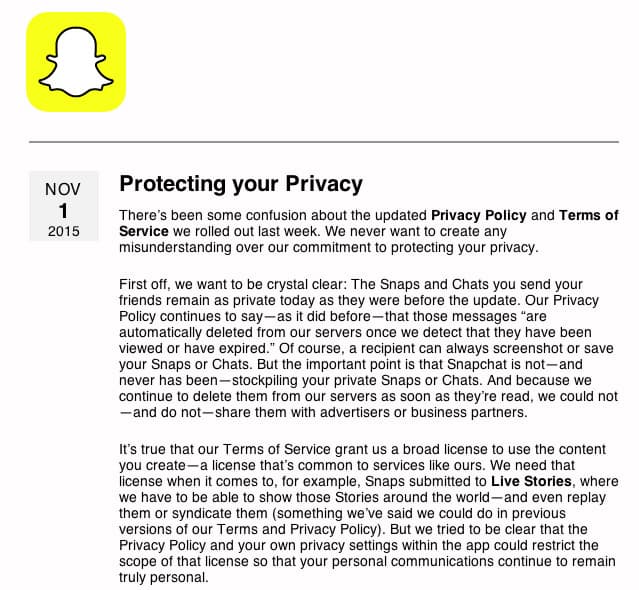Snapchat says it will continue to automatically delete users’ photos and video once viewed
Snapchat, a service favoured by teenagers that claims to have 100 million daily users, has hit back at press reports that the firm now owns all pictures and video.
A key feature behind Snapchat’s popularity has been its automatic deletion of images and messages a few seconds after they have been viewed.
But revised rules, issued on 28 October, state that users grant Snapchat ‘a worldwide, perpetual, royalty-free, sublicensable, and transferable license to host, store, use, display, reproduce, modify, adapt, edit, publish, create derivative works from, publicly perform, broadcast, distribute, syndicate, promote, exhibit, and publicly display that content in any form and in any and all media or distribution methods…’
However, Snapchat yesterday issued a follow-up statement in a bid to allay any ‘misunderstanding’ about its privacy policy following the negative media coverage.
Snapchat said it will continue to automatically delete data from its servers once viewed, adding: ‘…the important point is that Snapchat is not – and never has been – stockpiling your private Snaps or Chats’.
The firm admitted that its revised terms grant a ‘broad license to use the content you create’, but emphasised that the privacy policy and users’ own privacy settings ‘could restrict the scope of that license’.
Snapchat’s revised terms of service, issued on 28 October 2015
But you grant Snapchat a worldwide, perpetual, royalty-free, sublicensable, and transferable license to host, store, use, display, reproduce, modify, adapt, edit, publish, create derivative works from, publicly perform, broadcast, distribute, syndicate, promote, exhibit, and publicly display that content in any form and in any and all media or distribution methods (now known or later developed). We will use this license for the limited purpose of operating, developing, providing, promoting, and improving the Services; researching and developing new ones; and making content submitted through the Services available to our business partners for syndication, broadcast, distribution, or publication outside the Services. Some Services offer you tools to control who can—and cannot—see your content under this license.








